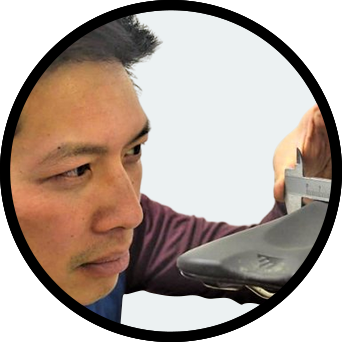Imagine you've put countless hours, significant financial resources, and immeasurable energy into training for your goal triathlon race for the year, only for your performance to unravel early on the run due to gastrointestinal (GI) distress.
This dreaded scenario is a sobering reality for many triathletes, irrespective of their standing in the professional or age-group hierarchy. Once your stomach declares rebellion, it’s a challenge to turn the tables as you battle your way to the finish line.
This GI distress can be caused by a number of factors, including a flawed race nutrition plan, food intolerances, weather conditions, and poor pacing.
Could your bike position be causing your GI issues?
However, a frequently overlooked factor contributing to GI distress is the way your bike position impacts your ability to ingest and digest the nutrition you need.
This was precisely the predicament facing former pro IRONMAN triathlete, Colin Norris. I’ve outlined Colin’s story to give an insight into how we worked with Colin to identify and address the issue, in the hope that it might help you if you’re trying to find a solution to your GI issues during races…
Norris was renowned for his fast running on the IRONMAN 70.3 circuit, regularly posting run splits of approximately 70 minutes for the half marathon (this was pre-high tech shoe era, so he was posting these times in traditional flat shoes) after an intense swim and ride. Unfortunately, debilitating stomach cramps when transitioning from the bike's horizontal position to the vertical stance of the run often hampered his ability to capitalise on his running skills.
Despite exhaustive testing for food intolerances, simplifying his diet to eliminate any potential triggers, and experimenting with different sports nutrition brands, we struggled to pinpoint the root cause of his recurring GI distress.

A variety of factors often combine to create and resolve such issues. A pivotal moment came at the start of the 2016 season when Colin decided to change his bike. Being on the taller side for a pro triathlete (approximately 6ft 2in with long legs and a relatively shorter torso), he had always struggled to fit comfortably on a TT bike.
Until then, Colin had been riding an old 2013 Cervelo P2 with a 58cm frame, a 175mm crank, and a 130mm/+6-degree stem, which barely accommodated his physique. Perched precariously on the saddle's edge and bent over like a prawn, he was neither efficient, nor comfortable! For his new bike, we decided to upgrade to a 61cm P2 for more flexibility in positional adjustments. Concurrently, Colin enhanced his strength and conditioning, specifically focusing on his core and thoracic spine flexibility.
As Colin strengthened and assumed better control over his posture on the bike, we made subtle changes to his position in line with his enhanced functionality and strength. As a result, we noticed a decline in the frequency of his GI issues. The sports nutrition products remained constant, so what was the game-changer?
We attributed the significant improvement in managing Colin's GI distress to alterations in his bike positioning. By upgrading the frame size, prioritising comfort and power production over aerodynamics, and intensifying his focus on strengthening and mobilising his body's specific areas, we managed to elongate his torso. This change eased pressure on his diaphragm and abdomen, enabling his stomach to process nutrition more effectively.
An added advantage of lengthening his torso and reducing abdominal pressure was enhanced lung functionality. This improvement meant Colin could use available oxygen more efficiently, lessening the need to divert oxygen-rich blood away from his stomach to fuel his muscles. The result was improved nutrient absorption and reduced effort to maintain the same output.
Fast forward to November 2022, after several bike adjustments and positional refinements, Colin finished IRONMAN Israel in 8 hours and 8 minutes, posting a 2:46 marathon - without a hint of GI distress.
Lessons from a bike fit case study
So, what can we learn from Colin's journey? Here are some key takeaways:
- Pursue problem-solving relentlessly. The solution may reside in a not-so-obvious place
- Progress is rarely linear. Patience and focus on the journey rather than an obsession with the outcome are key
- Perfecting your bike position is a work in progress, requiring both body strength and functionality improvements
- Your bike position must suit you. Comfort and force production often trump super-aero positions that you might struggle to maintain. There's more to an effective triathlon bike position than just aerodynamics!
- Find a supportive team (bike fitter, coach, nutritionist) who understands your event's demands, listens to feedback, and is committed to discovering what works for you
- Success is a continuous, collaborative process, not a one-time prescription
If you're looking to improve your bike position, you can get an exclusive 10% off any of Foundation Bike Fit's services by using the code PRECISION10 at https://foundation.fit.
